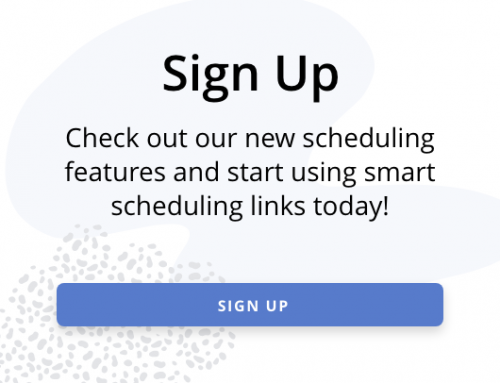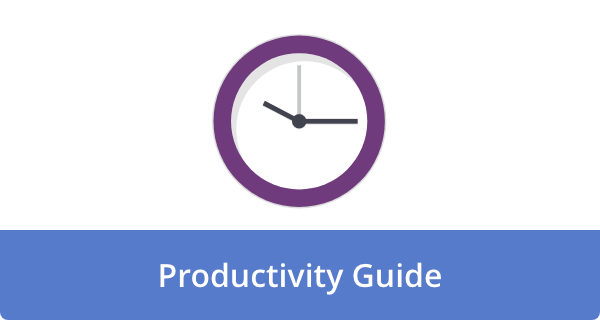

Every hour counts when you’re part of a small team. After all, managing limited resources, tight deadlines, and big ambitions requires productivity, which isn’t just a buzzword — it’s a necessity. However, you don’t need a huge workforce or a Silicon Valley budget to work smarter. Now that artificial intelligence (AI) tools are more widely available than ever, small teams can boost efficiency, cut costs, and scale faster than they ever could before.
In this post, we’ll explain how artificial intelligence can make small teams more productive without burning out.
The Productivity Problem Small Teams Face
There are several challenges small teams face when it comes to productivity:
- Wearing too many hats. In a single day, one person might handle marketing, sales, customer service, and operations. As a result of constant context-switching, focus and efficiency are drastically reduced.
- Time-consuming tasks. In addition to wasting valuable time, routine and repetitive work eliminate opportunities to build client relationships, innovate, or focus on growth-focused activities. Despite feeling unavoidable, these “administrivia” tasks contribute little to the growth of the core business.
- Limited budgets. In some cases, hiring more people isn’t an option, making scaling more challenging. For many startups, the cost of hiring an additional full-time employee, including salary, benefits, and overhead, is a significant barrier.
- Knowledge silos. With no dedicated roles, critical information may become scattered, making it hard for team members to find the information they need. This can lead to delays and inefficiency.
- Burnout risk. Stress levels can rise when a team must perform consistently with limited resources, which can lead to team burnout. The impact of this is felt in terms of morale, creativity, and long-term retention.
While productivity hacks like time blocking or better project management may help, they often come with limitations. While they optimize human effort, they don’t significantly reduce the amount of human effort required. This is where AI comes in, automating, streamlining, and accelerating the work of small teams in ways that were previously impossible.
What AI Can—and Can’t—Do for Small Teams
Before diving into the details, it’s essential to set realistic expectations. Your team’s creativity, emotional intelligence, strategic thinking, and the personal touch that defines your brand won’t be replaced by AI. However, it can take over repetitive, data-driven, and time-consuming work, allowing your team to focus on higher-value tasks that only humans are capable of accomplishing.
Consider AI as a force multiplier. Rather than replacing people, it makes their jobs easier, faster, and less stressful. By handling the mundane, your team can tackle the magnificent.
7 Ways AI Supercharges Small Team Productivity
Utilizing AI to enhance your small team’s productivity can be a game-changer. Let us explore how.
1. Automating routine tasks.
By automating routine, low-value work that drains your day, AI is one of the most effective ways to boost productivity.
- Scheduling meetings. Using AI-powered assistants like Calendar or x.ai, you can schedule meetings, coordinate times across multiple calendars, send invitations, and even follow up, thereby reducing the need for endless back-and-forth.
- Email management. In addition to suggesting responses, summarizing long threads, prioritizing emails, and decluttering inboxes using AI, tools such as Superhuman or Gmail’s Smart Compose reduce the amount of time spent sifting through emails.
- Data entry and reporting. AI can extract data from various sources, input it into spreadsheets or CRM systems, and summarize key insights from vast datasets, saving hours of manual data processing.
With AI, teams can focus on strategic thinking and have a direct impact, rather than spending time on time-consuming, repetitive tasks.
2. Enhancing customer support.
Having stellar customer service builds loyalty and drives referrals, which is key for small businesses. The problem is that staffing a 24/7 support team isn’t always possible. Thankfully, your customer experience can be elevated with AI.
- Chatbots. In addition to handling common customer inquiries, answering FAQs, and guiding users through basic troubleshooting, tools like Intercom, Drift, and Zendesk AI can help qualify leads, allowing agents to focus on more complex or sensitive issues.
- AI ticketing systems. Artificial intelligence can triage incoming support requests, flag urgent issues based on keywords or customer history, and even suggest pre-written responses to humans based on previous tickets.
In addition to speeding up response times and improving efficiency, this approach also enhances customer service without necessitating a large, round-the-clock staff.
3. Streamlining content creation.
The use of content marketing has been proven to build brand awareness, engage audiences, and drive organic traffic to a website. However, creating high-quality blog posts, social media updates, newsletters, and website copy requires a significant amount of time and creative energy. Small teams can benefit from AI writing assistants:
- Generate blog ideas and outlines. With the help of AI tools, you can brainstorm topics relevant to your niche and audience, and then create outlines to get your writing started.
- Draft emails and social posts. Marketing emails, social media captions, and ad creatives can be created using AI, saving hours of work.
- Edit for grammar, tone, and readability. Grammarly, as well as tools like ChatGPT and Jasper, offer features for proofreading, suggesting improvements, and ensuring consistency in your messaging.
While human creativity and strategic oversight remain essential for crafting compelling narratives, AI can significantly accelerate the first draft phase or help polish content more efficiently, enabling faster and consistent delivery.
4. Smarter decision-making with AI insights.
It’s common for small teams to work with limited resources, and they often lack the luxury of dedicated analysts or data scientists to sift through large amounts of data. As a result, AI tools can provide real-time insights and actionable recommendations, turning raw data into strategic intelligence.
- Sales forecasting. Using AI-powered CRMs like HubSpot or Salesforce, teams can set realistic goals and allocate resources efficiently by analyzing past sales data, market trends, and customer behavior.
- Website optimization. To boost conversions, tools like Hotjar or Crazy Egg use artificial intelligence to analyze visitor behavior (e.g., click patterns, scroll depth) and suggest improvements.
- Marketing performance. With AI-driven insights, platforms like Google Analytics and social media management tools can refine campaigns more quickly, identifying which content resonates, when to post, and which audience segments to target.
The result? Smarter, faster decision-making based on data, not just guesswork. As a result, small teams can pivot quickly, optimize campaigns, and allocate resources where they are most effective.
5. Personalizing the customer experience.
Being able to stand out in a crowded market requires personalization. With AI, even small businesses can deliver highly personalized customer experiences — something that used to require massive databases and sophisticated marketing departments. AI allows you to;
- By tailoring emails to individual customer behavior, preferences, and purchase histories, communications will feel more relevant and personal.
- It’s possible to automate product recommendations based on a customer’s previous browsing history, purchases, or similar customer profiles, thereby enhancing cross-selling and upselling.
- Using real-time ad optimization, ads can be dynamically adapted to appeal to different audience segments, optimizing ad spend and improving conversion rates.
By fostering loyalty among customers and ensuring they feel valued, small businesses can compete successfully with larger companies.
6. Boosting team collaboration.
In addition to helping with external tasks, AI also improves internal collaboration, making small teams even more cohesive and effective.
- Notion AI. Utilizes your workspaces to summarize meeting notes, generate action items, and organize projects while helping teams stay aligned using a centralized repository of relevant information.
- Slack AI. By summarizing long conversations, this solution surfaced key messages, suggested answers to common questions within channels, and helped manage information overload.
- Otter.ai or Fireflies. Using these tools, you can transcribe live meetings or recorded audio, highlight key action items, and create searchable summaries, thereby eliminating the need for extensive manual note-taking.
When working remotely or asynchronously, AI streamlines communication, breaks down information silos, and makes information more accessible.
7. Enhancing security and fraud detection.
Due to limited IT resources, security often takes a back seat until a breach occurs in a small team. Nearly 43% of all cyberattacks target small and medium-sized businesses. Even more concerning is that 90% of companies lack the maturity to counter the AI-enabled threats of today.
However, in the face of threats, AI can act as a vigilant, 24/7 guardian.
- AI-powered cybersecurity tools. In addition to monitoring network traffic in real-time, these tools can identify unusual patterns and detect phishing attempts or security breaches. With the help of vast datasets of known threats, they are highly effective in identifying new and evolving threats.
- Fraud detection in financial transactions. Using AI, you can identify potential fraud before it has an impact on your business or customers if your business handles online payments.
With AI for security, small teams can enhance their digital defenses without hiring a full-time cybersecurity expert, protecting valuable data and retaining customer trust.
Potential Pitfalls to Watch For
Despite AI’s enormous potential, small teams should proceed carefully. To avoid common mistakes, follow these tips;
- Over-automation. Some tasks should not be automated. When bots cannot handle complex, nuanced issues, too much automation can depersonalize customer interactions. When it comes to the most important things, always preserve the human touch.
- Data privacy concerns. In most cases, AI tools require access to sensitive business or customer data. Therefore, ensure compliance with data protection regulations (such as GDPR or CCPA) and select reputable vendors with robust security protocols. Also, become familiar with how your data is used and stored.
- Over-reliance. AI is not a strategy; it’s a tool. Rather than replacing human decision-making, it should enhance it. When AI outputs are blindly trusted without human review, costly mistakes or missed opportunities can result. Ensure that critical thinking and human oversight are maintained.
- Ignoring setup and maintenance. A comprehensive AI tool isn’t a “set it and forget it” type of solution. It requires initial setup, ongoing training (especially for custom chatbots), and periodic evaluation to ensure continuing functionality and adaptability.
To scale smarter, not sloppier, we need to strike a balance between automation and a human touch.
How to Get Started with AI (Without Overwhelm)
You don’t need to implement everything right away. Take it slow and build on it:
- Identify repetitive tasks. Take a look at what your team does on a daily and weekly basis by conducting a mini-audit. Look for areas where your team spends disproportionate time on repetitive, low-value tasks. Do you notice any recurring bottlenecks or errors?
- Pick one or two AI tools. Choose tools that address your most pressing pain points and provide clear ROI (e.g., automating email sorting, scheduling, or creating first drafts). Solve one problem at a time instead of trying to solve them all at once.
- Test and iterate. Initially, roll out the tools gradually with a small group of testers. Take your team’s feedback into account when evaluating usability and effectiveness. Don’t be surprised if you need to adjust and fine-tune your use of them.
- Many AI platforms offer free trials. This allows you to experiment without incurring significant upfront costs. By evaluating their suitability before investing money, you can make an informed decision.
The Bottom Line: Small Teams, Big Impact
In today’s fast-moving business environment, small teams leveraging AI are not just working harder, but also smarter. With artificial intelligence, small teams can automate routine tasks, enhance decision-making, streamline content, improve customer service, and strengthen security.
To benefit from AI, you don’t have to be a tech giant. Every small team can scale faster, reduce stress, and achieve more by utilizing the right tools and a thoughtful approach.
Remember — the future of work is here — and AI powers it.
Image Credit: Mikael Blomkvist; Pexels











John Rampton
John’s goal in life is to make people’s lives much more productive. Upping productivity allows us to spend more time doing the things we enjoy most. John was recently recognized by Entrepreneur Magazine as being one of the top marketers in the World. John is co-founder of Calendar.